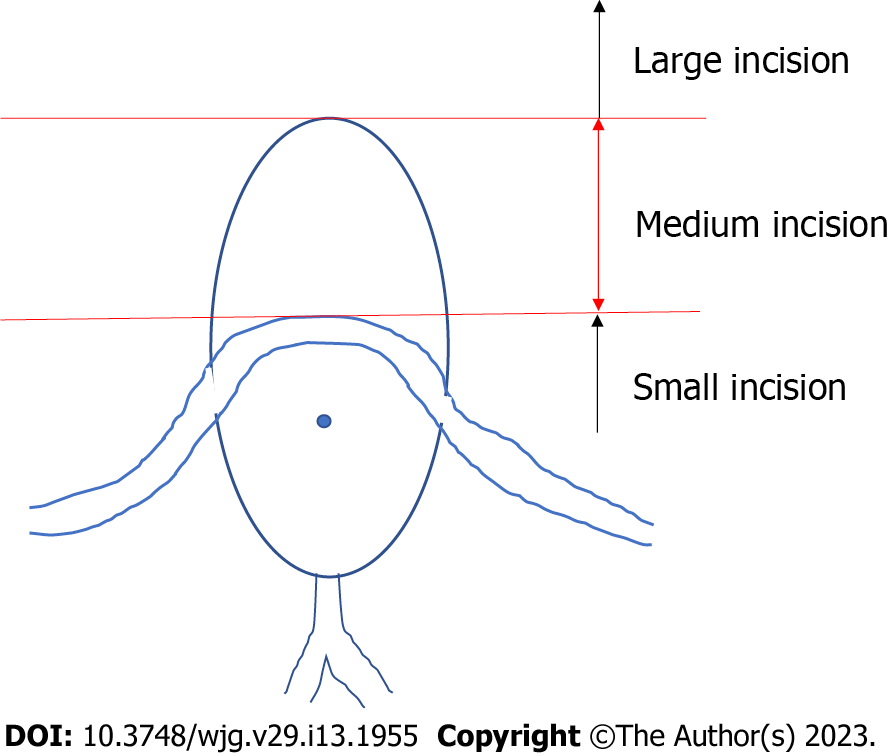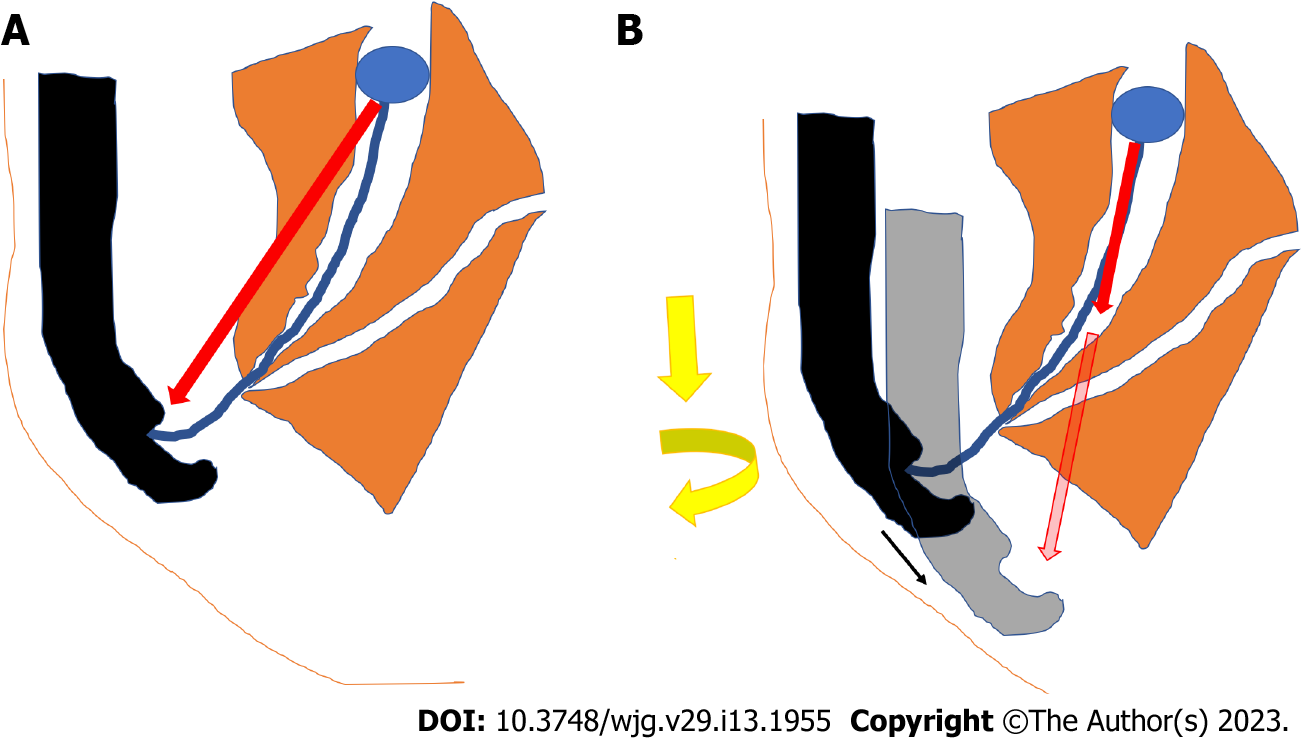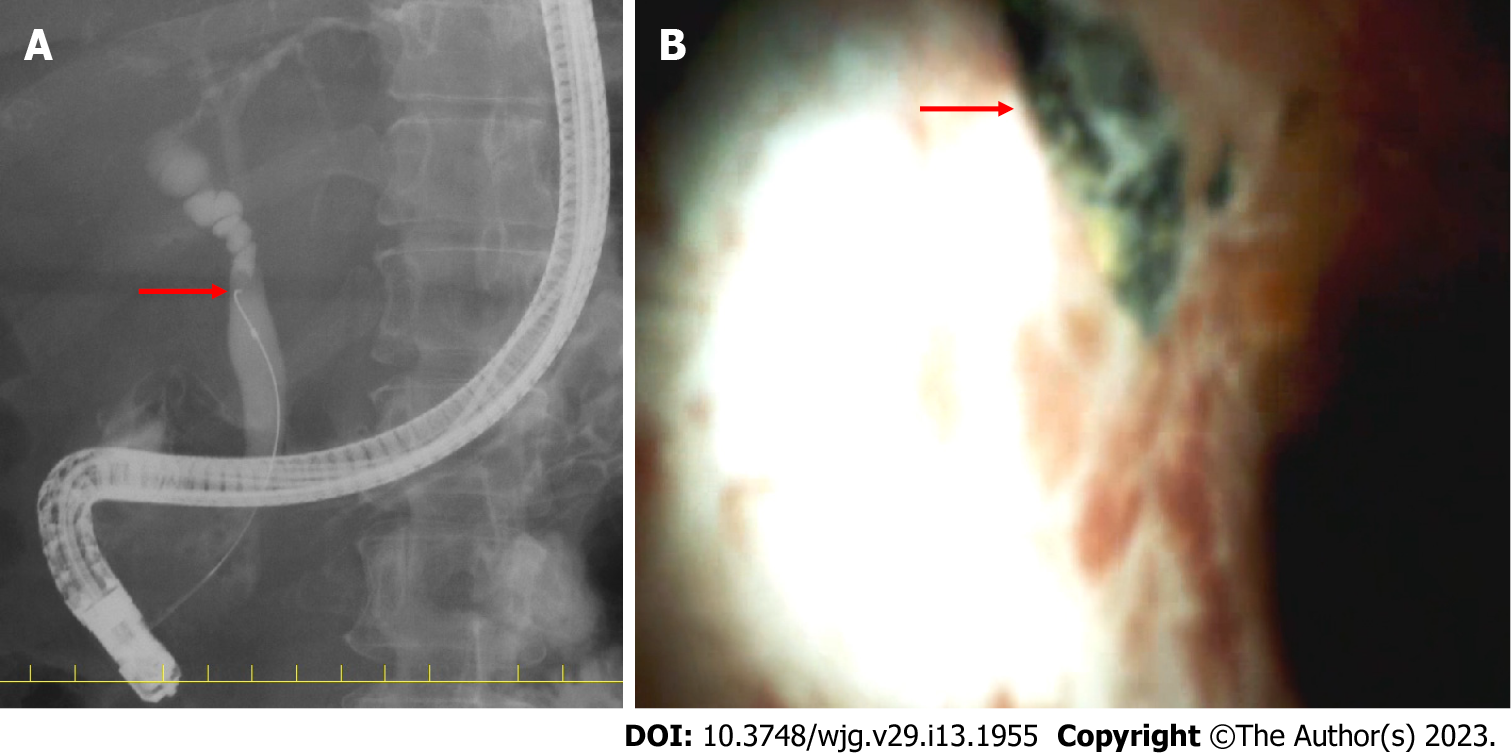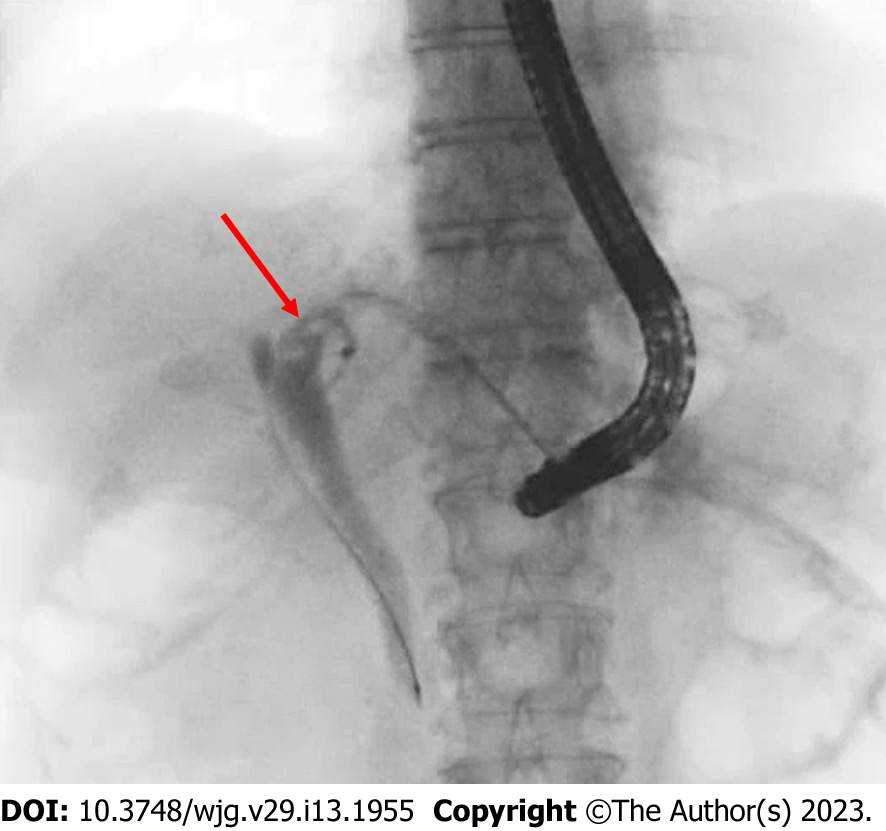Copyright
©The Author(s) 2023.
World J Gastroenterol. Apr 7, 2023; 29(13): 1955-1968
Published online Apr 7, 2023. doi: 10.3748/wjg.v29.i13.1955
Published online Apr 7, 2023. doi: 10.3748/wjg.v29.i13.1955
Figure 1 The oral protrusion.
Endoscopic sphincterotomy incision size. The risk of perforation increases when the incision exceeds the superior margin of oral protrusion.
Figure 2 Basket/balloon catheter operations.
A: Direction of force on the retrieval balloon or basket when pulling the catheter with the right hand; B: Direction of the force on the retrieval balloon or basket when applying right rotation and pushing the endoscope.
Figure 3 Stone in the lower common bile duct pocket.
Red arrows indicate a stone in the lower common bile duct pocket. A: A case with stone in the lower common bile duct pocket; B: Disposable NT retrieval basket (VorticCatch V: Olympus Medical Systems, Japan).
Figure 4 Stone stuck in the bifurcation of the gallbladder duct.
Red arrows indicate a stone stuck in the bifurcation of the gallbladder duct. A: The stone got stuck in the bifurcation of the gallbladder duct, as seen by endoscopic retrograde cholangiopancreatography. The guidewire could not be inserted into the gallbladder duct because of the obstruction by a stone; B: A stone stuck in the bifurcation of the gallbladder duct as observed by cholangioscopy.
Figure 5 Case of total gastrectomy with RY reconstruction.
Enteroscopy-assisted endoscopic retrograde cholangiopancreatography was unsuccessful; therefore, an endoscopic ultrasound-guided hepaticogastrostomy was performed. The red arrow indicates bile duct stones.
Figure 6 Release of grasped stones.
A: Push the basket catheter up into the hepatic hilum; B: Push further to invert the grasped stone; C: Push and deflect the basket wire; D: Close the basket while pushing the catheter.
Figure 7 BML-110A-1 (Olympus Medical Systems, Tokyo).
The authors have obtained the permission for figure using from the Olympus (Supplementary material).
Figure 8 The case in which the basket could not be unmated even with the lithotripter.
The basket and grasped stone were visualized under cholangioscopy and crushed using electronic hydraulic lithotripsy (EHL). The red arrows indicate common bile duct (CBD) stones, white arrow basket catheter, and orange arrow EHL probe. A: CBD stone; B: CBD stone grasped by basket; C: CBD stone grasped by basket as seen by cholangioscopy; D: CBD stone crushed with EHL.
- Citation: Masuda S, Koizumi K, Shionoya K, Jinushi R, Makazu M, Nishino T, Kimura K, Sumida C, Kubota J, Ichita C, Sasaki A, Kobayashi M, Kako M, Haruki U. Comprehensive review on small common bile duct stones. World J Gastroenterol 2023; 29(13): 1955-1968
- URL: https://www.wjgnet.com/1007-9327/full/v29/i13/1955.htm
- DOI: https://dx.doi.org/10.3748/wjg.v29.i13.1955
















